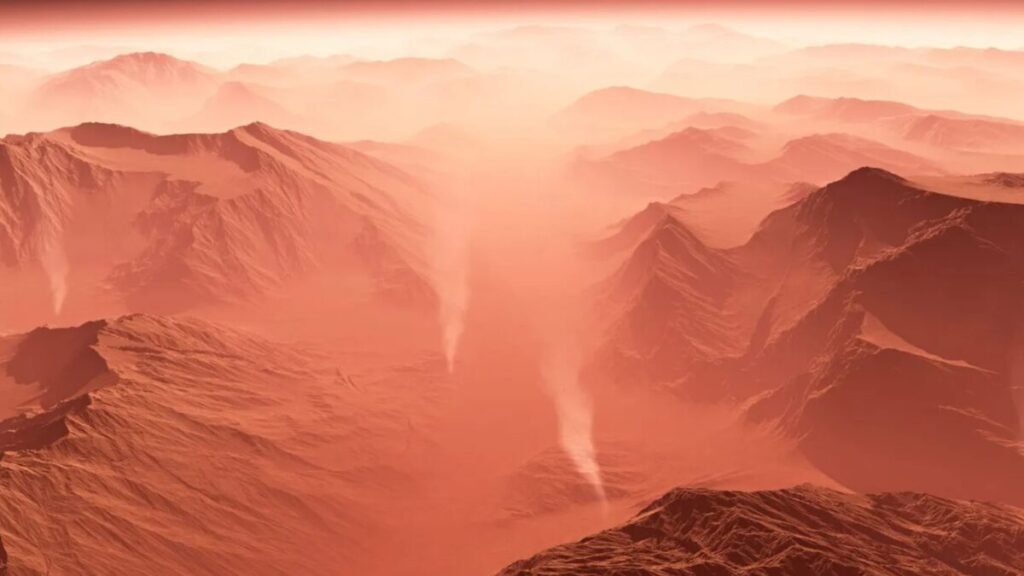Mars has been sending a signal for 20 years that we didn’t quite get. Those storms covering its surface could be a real pain for living there!

For decades, cameras on Martian probes have been tirelessly observing the surface. What once seemed like random movements of Martian dust now reveals itself as a complex and much more violent atmospheric system than previously believed. A recent study by the Center for Space Habitability at the University of Bern has provided the most detailed record to date of these dust devils, potentially posing a real obstacle to human life on the red planet.
### Mini Tornadoes on Mars
These dust devils are like miniature tornadoes, reaching speeds of up to 160 km/h, making them the fastest winds recorded on Mars. Despite the planet’s thin atmosphere reducing their impact, the dust they lift can remain suspended for weeks, affecting solar radiation and creating extreme temperature fluctuations. In essence, they act as a chaotic thermostat regulating the planet’s climate.
### Where the Winds Never Sleep
The most active dust devil zones are concentrated in Amazonis Planitia, a vast plain in the northern hemisphere ideal for swirling vortices. These whirlwinds have lifted over 55,000 tons of dust in the north and 25,000 in the south between 2004 and 2024, redistributing energy and matter with direct implications for surface operations.
### The Silent Enemy of Missions
The consequences are not just theoretical. Rovers like Opportunity and InSight ended their missions after being covered in dust, blocking their solar panels. With the constant microstorms during Martian spring and summer, future human colonies will face a relentless environment. The challenge of dealing with these invisible and omnipresent threats is a real concern for future missions and potential habitats on Mars.
This new understanding of Martian weather patterns will shape upcoming missions, influencing landing site choices and preparing for the constant challenges posed by the planet’s dynamic environment. Mars is not a lifeless desert but a world in constant motion, reminding us that it is not yet ready for human habitation, despite our 20 years of observation.






